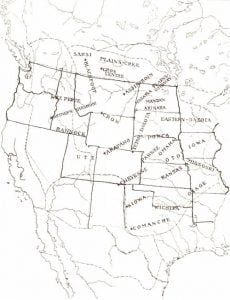Waukon Decorah Exhumed
When the remains were first exhumed in 1859, the skull had black hair; this assertion is corroborated in a statement made by R. F. Gibson, January 27, 1913, to the writer of this article. Mr. Gibson was one of a committee of three appointed to take charge of the remains. Waukon Decorah was at this time living in Minnesota with his people; this fact has been established beyond question. It is stated in Alexander’s history that even prominent participants in the first exhumation of the alleged remains of Decorah were confused with doubts, by rumors, current at the time, to … Read more




